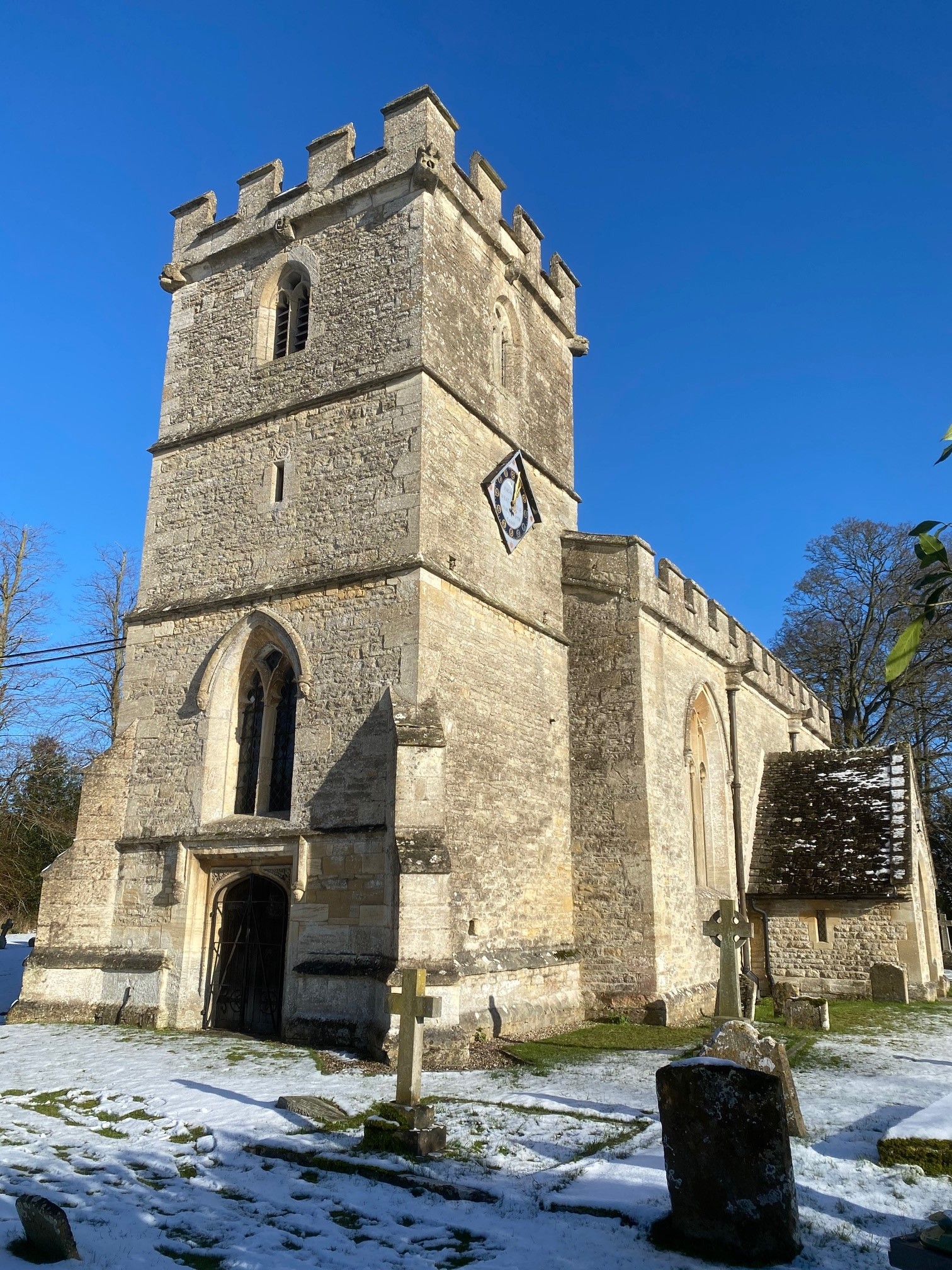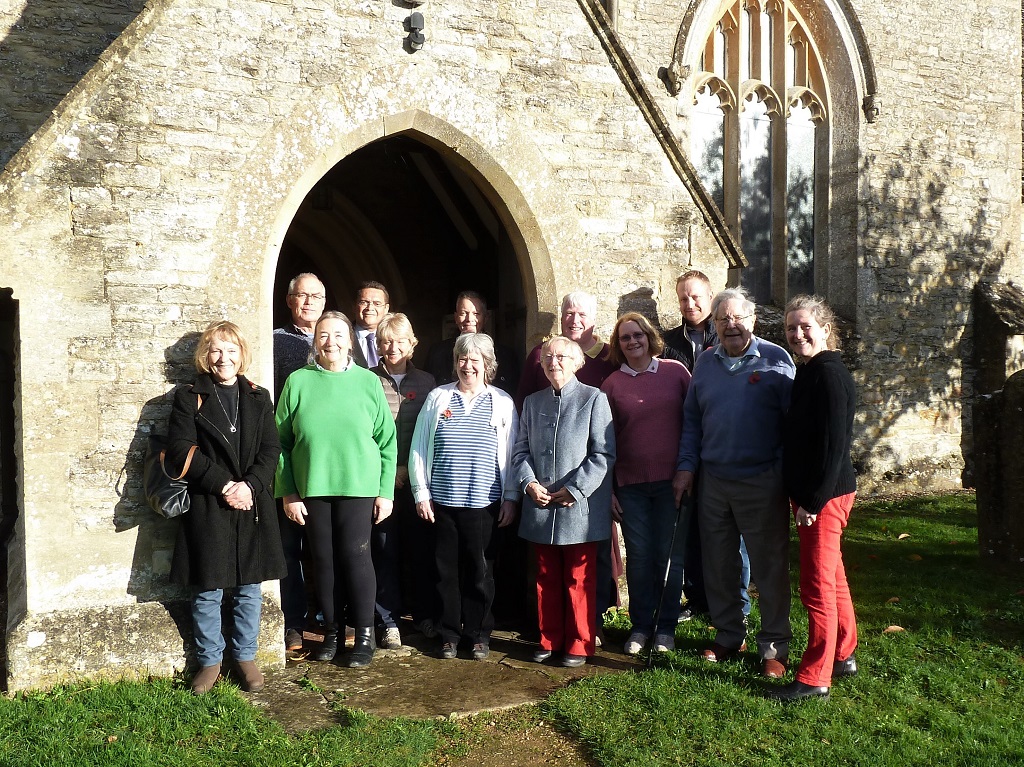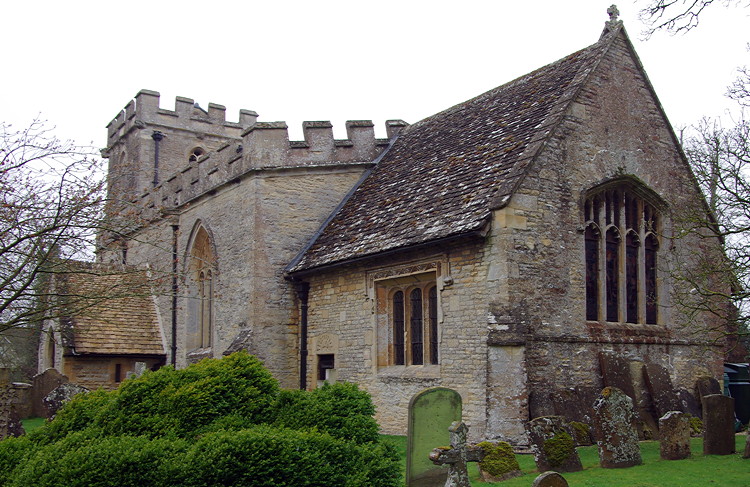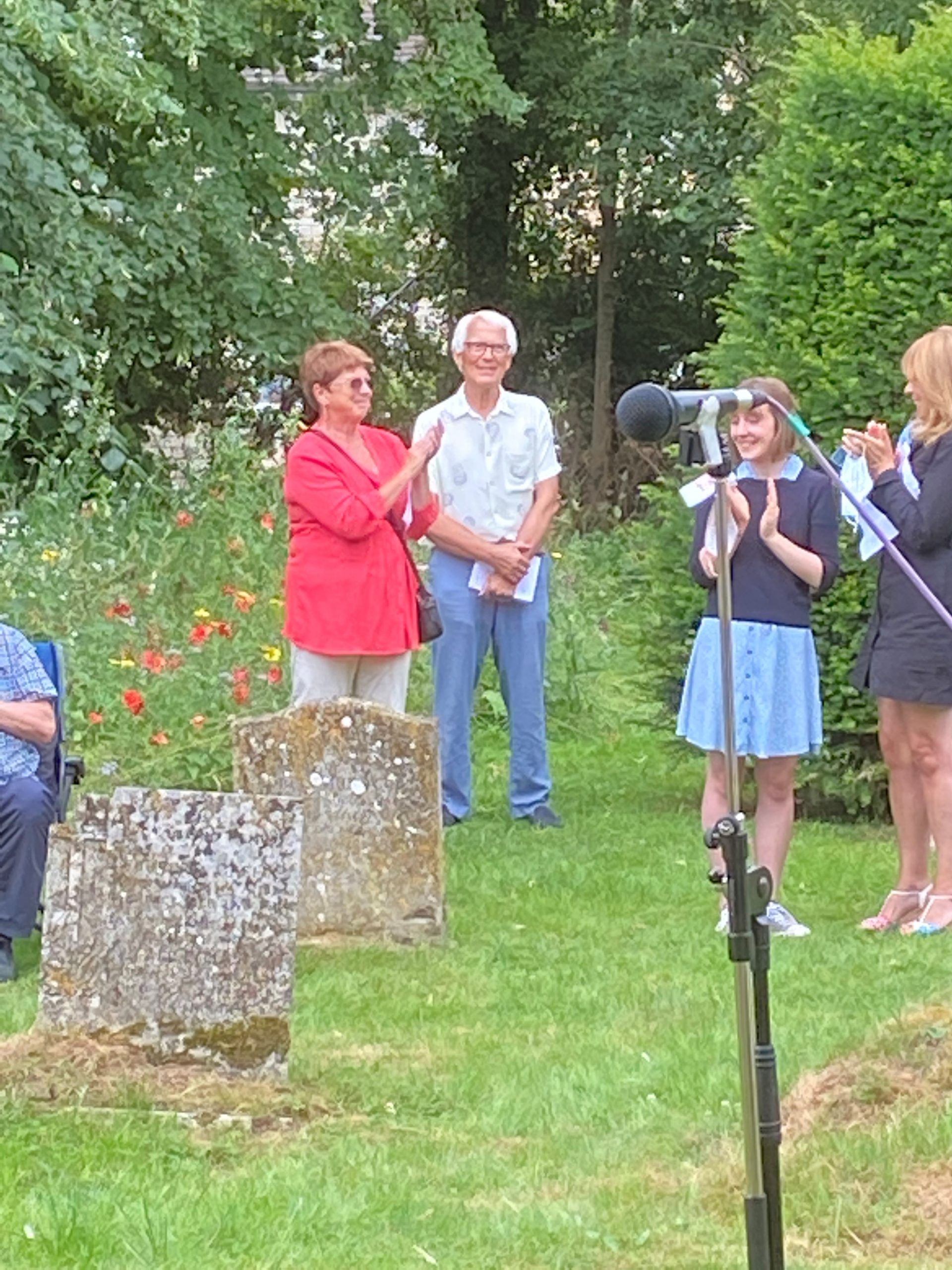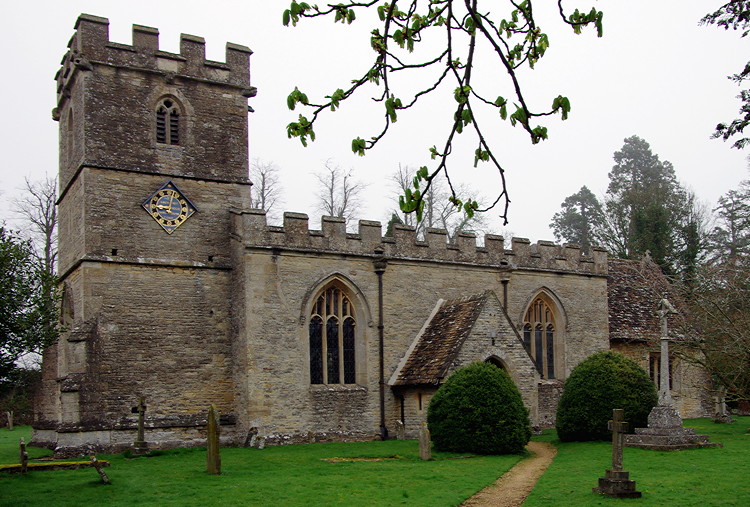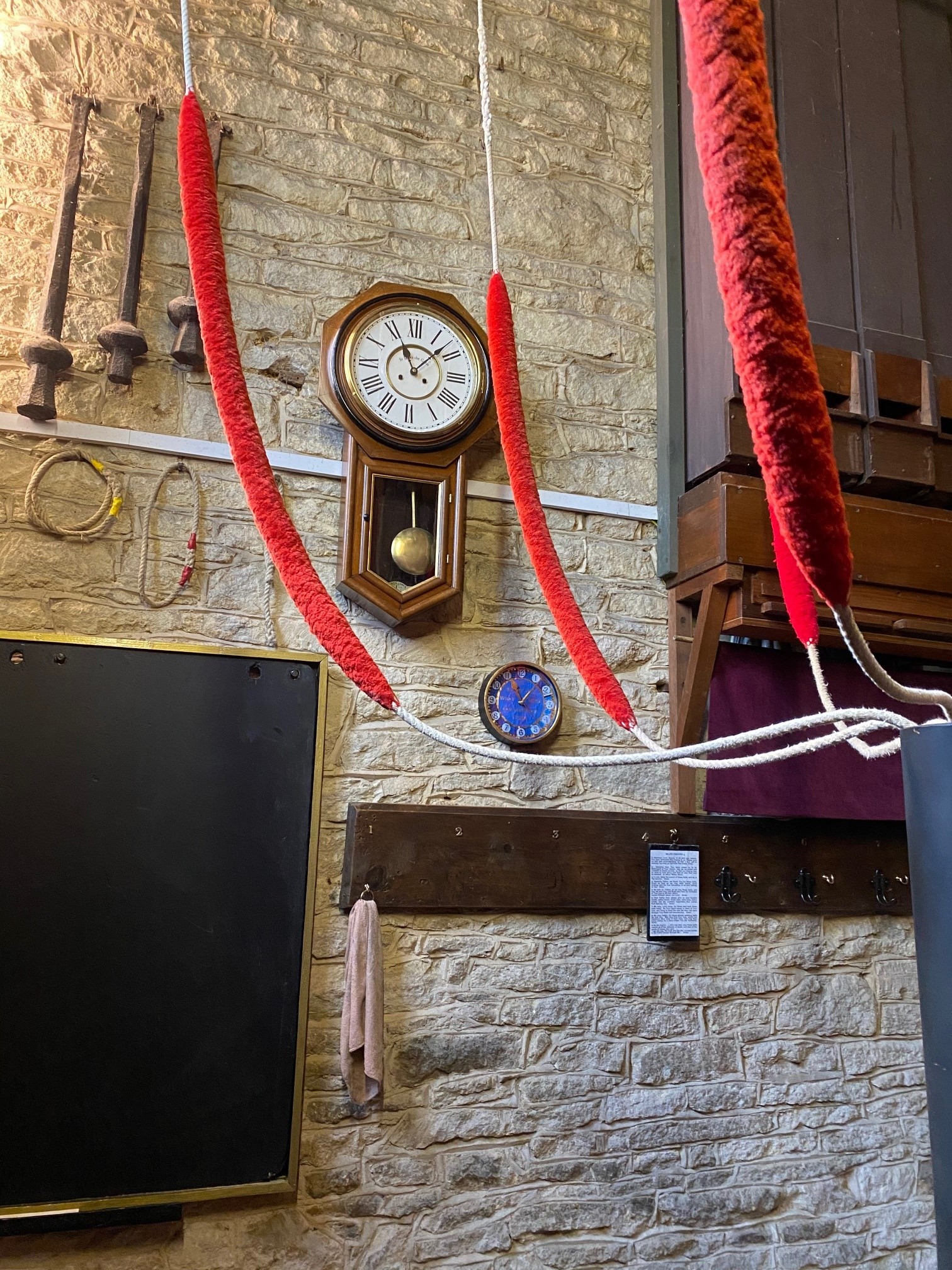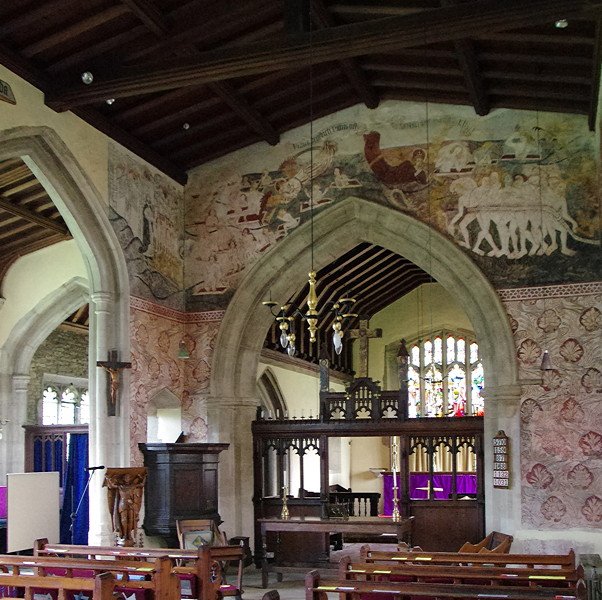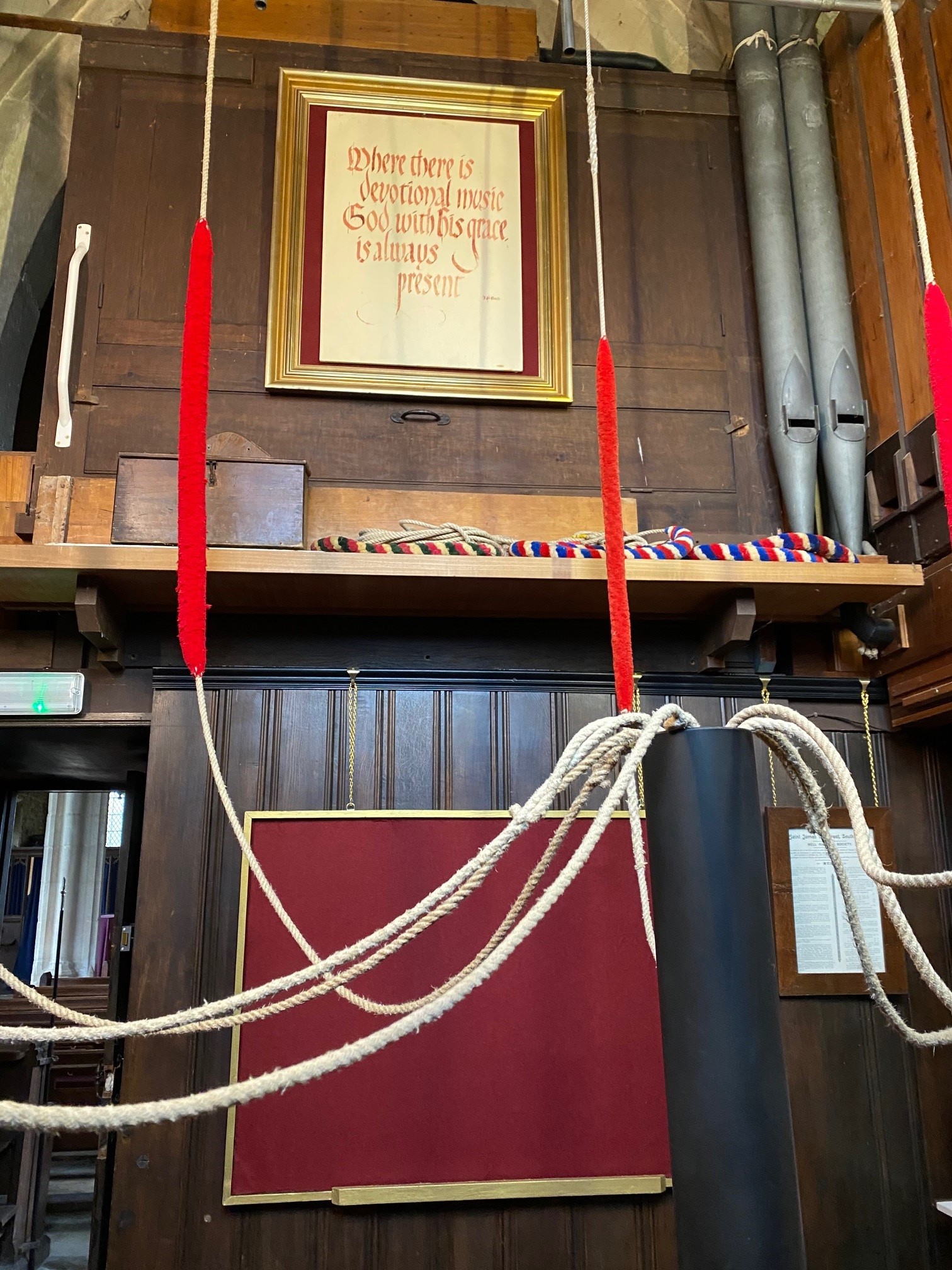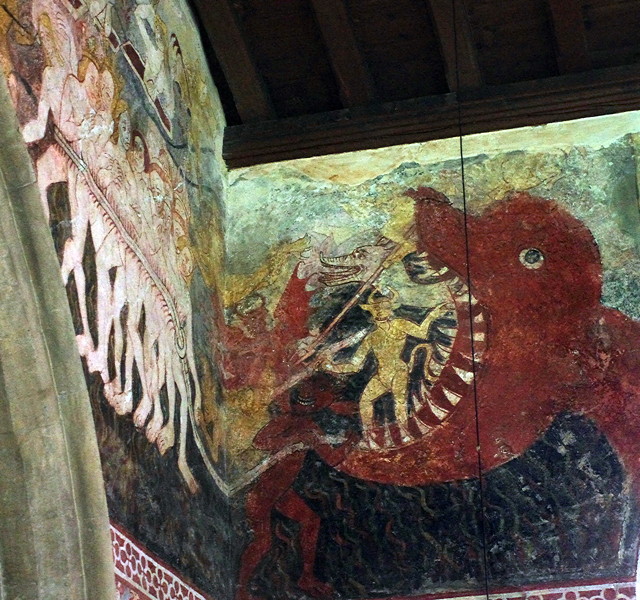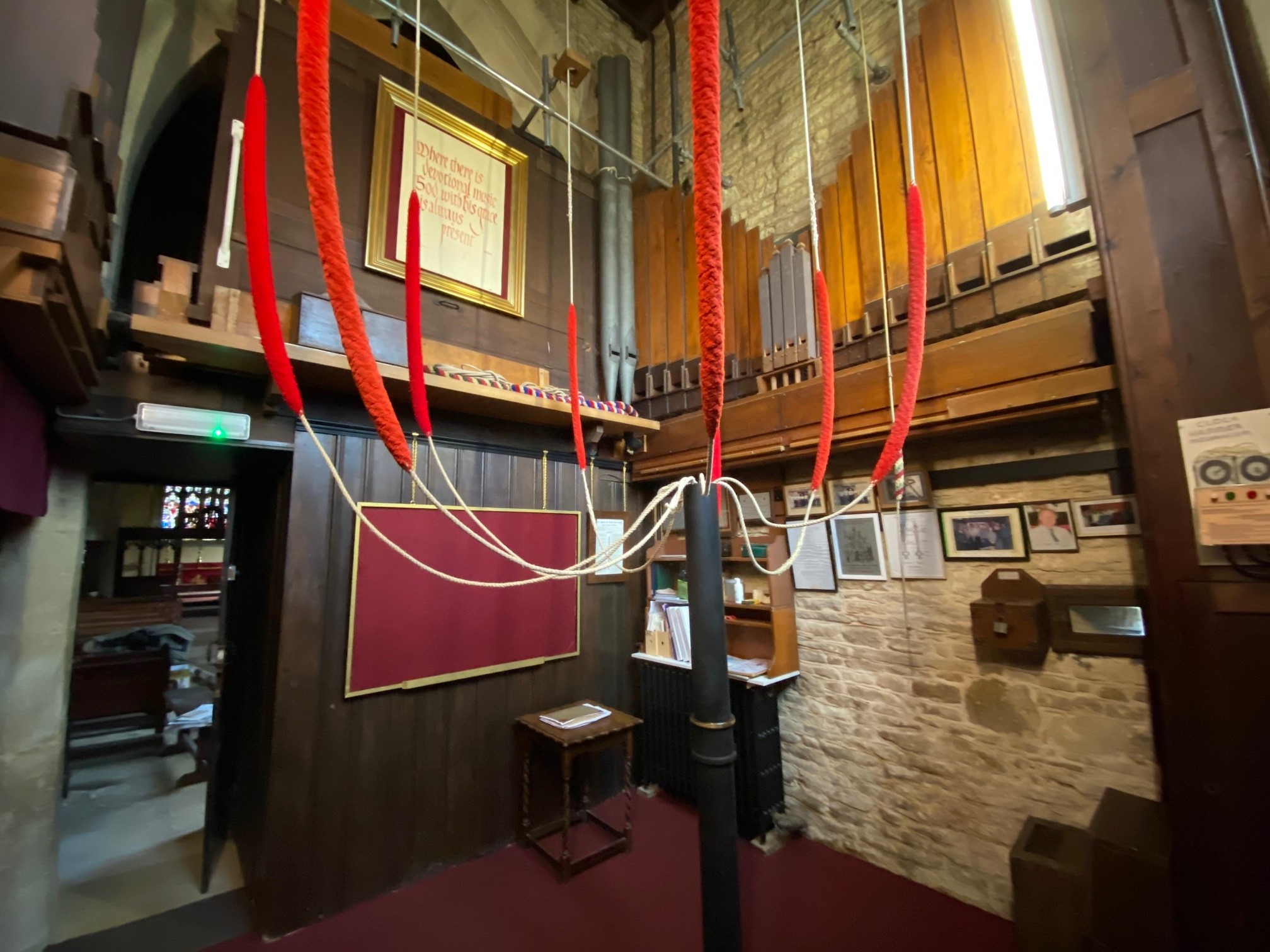Ringing St James the Great, South Leigh
8 bells (10-1-26). Ground Floor.
OX29 6US. (Locate using Google Map or OS Map or OpenStreetMap).
Practice: 1st & 3rd Wednesday 19:30 – 21:00.
Sunday: 10:00 (2nd & 4th Sunday)
About us
St James the Great, South Leigh
The church of St James the Great was probably built as a chapel soon after the Norman conquest, and the living was granted to Reading Abbey in 1147. When the Abbey was dissolved by Henry VIII in 1539, the living was taken by the crown, to be given to the bishopric of Oxford at the end of the 16th century. Meanwhile the church had become part of the Stanton Harcourt estate, and South Leigh only became a separate parish in 1869. Today the parishes of Cogges, near Witney, and South Leigh form a joint benefice within the Diocese of Oxford.
The beautiful church is full of history and variety. The chancel is the earliest surviving part, with a doorway in the south wall that is Norman. In the north wall there is a Norman window, and the pillar piscina and ambry south of the altar are Early English. Over the chancel arch is a 15thcentury Doom painting. Two angels blow the last trump and the dead rise from their graves, among them a king, a queen, a mitred bishop and a merchant. The good are welcomed to the gates of heaven, the doomed are dragged towards the gaping mouth of hell. There was much rebuilding in 15thcentury. The nave has an arcade of arches in the Perpendicular style separating it from the north aisle, which has wall paintings from the 14th and 15thcenturies. Corbels on the north wall are decorated with stone heads, extending into the north chapel. The battlemented 3-stage tower dates from the 15thcentury, as does the font. The pulpit is Jacobean. John Wesley preached his first sermon here in 1725 at the invitation of the rector of Stanton Harcourt.
The turret clock, which is mid-18thcentury, is said to have come from Gloucestershire, and to have been installed in 1905. Alterations on it resemble the work of Nicholas Paris of Warwick. The face is reported to have been painted by the Vicar (Rev Arthur East 1885-1912) and was last repainted in 2000 when the electric winding mechanism was fitted.
You can find out more about the church at the links below:
Link 1
About us
The Bells
St James’ ‘sweetly-toned full peel of eight bells’ dates from 1907, when the bells were dedicated by the Bishop of Oxford. They were preceded by a ring of three bells from the 16th and 17th centuries, probably cast in Woodstock, of which the original clappers still hang in the tower. The then Vicar reported that, ‘the casting of the original three bells was very unsatisfactory, the metal being false, so they were melted down to help to found a new peal. That was a very costly matter, and if they included the new hanging and fixing, the present peal involved an outlay of £410’.
The eight bells were made by Mears and Stainbank, from the Whitechapel Bell Foundry. They have ‘Doncaster’ pattern heads and hang with gear, type B, in quite a rare wrought iron side-pattern frame made by Webb and Bennett, Kidlington.
In 2020-21, a realignment of the rope guides much improved the ringing circle and a complete refurbishment of the ringing chamber was undertaken. The boxes are now stained and carpeted, the brass work polished and lacquered, and the pictures, certificates, notice board and blackboard re-framed, gilded and rehung. We now have a handsome early 20th century drop dial pendulum wall clock (converted to a quartz/battery movement for accuracy and ease of maintenance!) and a new rope warmer.
There is also a Sanctus Bell from c. 1399, hung for chiming in a separate frame above the ring. Unfortunately, it bears no inscription or founders’ marks.
About us
Details and inscriptions of the bells
TREBLE (G):
3 cwt 2 qrs 24 lbs.
Gloria in Excelsis Deo
(Glory to God in the highest)
Mears & Stainbank – 1907
2 (F♯) :
3-2-27 c.w.t.
Et in terra pax hominibus
(And on earth peace to all men)
Mears & Stainbank -1907
3 (E):
4-0-16 c.w.t.
Laudamus Te
(We praise you)
Mears & Stainbank – 1907
4 (D):
5-0-4 c.w.t.
Benedicimus Te
(We thank you)
Mears & Stainbank -1907
About us
Details and inscriptions of the bells
5 (C):
5-2-27 c.w.t.
Adoramus Te
(We adore you)
Mears & Stainbank -1907
6 (B):
5-3-21 c.w.t.
Glorificamus Te
(We glorify you)
Mears & Stainbank – 1907
7 (A):
7-3-0 c.w.t.
Gratias agimus Tibi
(We give thee thanks)
Mears & Stainbank – 1907
Tenor (G):
10-1-23 c.w.t. in the key of G
Agnus Dei Qui tollis peccata mundi miserere nobis
(Lamb of God, who takes away the sins of the world, have mercy on us)
Mears & Stainbank – 1907
